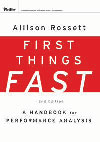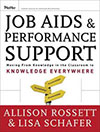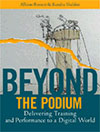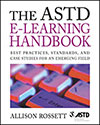Many colleagues have asked what I think will emerge in workplace learning in 2015. Some put it this way, “Have you read anything worthwhile that summarizes trends for 2015?” Or this, often this, “I should be assessing my learning organization as we move into a new year. It’s an opportunity. Got a bumper sticker on trends, 2015?”
I don’t have that bumper sticker. What I do have is enthusiasm about reflecting on emergent directions in workplace learning. I’ve been reviewing what others (such as Malamed, Deloitte/Bersin, and Taylor) have to say on this matter.
Here is where I think workplace learning will trend in 2015. I’m consciously using the verb, to trend, not the noun, trend. I think we’re trending, we are moving towards, making tracks, inclining in particular directions.
Few learning organizations are executing at the peak of these trends. Not yet. But soon.
- Personalized. Outrageous, isn’t it, that casinos provide more personalized development experiences than corporate learning organizations and universities? Casinos know who we are and what we do and then they serve us accordingly. That is personalization based on choices made in the past. Unlike curriculum delivered with a fire hose, individualized programs emerge from performance, assessments, self-assessments, and guidance provided by coaches, supervisors and competency maps.
- Customized. Personalization is devoted to the individual. Customization looks to assure an aligned organization wrapping around that individual. Think of it as a move from habits that favor courses to data-driven decisions that tailor solutions. Robert Mager and Peter Pipe, in the last century, and Marc Rosenberg and Steve Foreman, in this one, urge us to look at each request (better performance appraisals, safer equipment operation, introduction of a new software package) in order to customize systems based on data. Customization is characterized by humility regarding the power of any course, in and of itself, to accomplish strategic purposes like technology innovation, leadership and compliance
- Miniaturized. We are not talking about just any customized and personalized solution. We are trending towards those are small, flexible, reconfigurable and above all, intensely useful. Retired VADM Pat Tracey expressed dissatisfaction with the status quo at a Navy Learning Strategies Consortium in 2007: “Sending our people to residence programs is not compatible with our urgent needs in the field and our human capital strategy….” That was then. Today, with even more pressing requirements for speed and cost reduction, and tastier technology options, many line leaders demand programs that are available 7/24/365. A 16-week residential course for retirement specialists? Naaaaa. A four-day class on ethics? No way. Executives and their people prefer answers, guidance, and support at the moment of need, in bite-sized chunks that are targeted to the task or question at hand. Less is more in 2015, via sliced and diced courses, tools, webinars, conversations, videos, and apps that automate sometimes more than they educate.
Think Legos not the Leviathon.
- Mobilized. Line leaders seek education, information and support delivered smack dab in the middle of work every day, everywhere. For that we are turning to mobile devices. Mike Glass, now the learning leader at ThermoFisher, described his enthusiasm for learning and support delivered via phones and tablets to the peripatetic sales force in his prior position. Mike noticed that the fund managers were devoted to exercising every night, with devices stuck in their ears. He saw this as an opportunity to deliver financial updates and reminders, in small nuggets, because of their gusto for staying up-to-date and working out. Another Mike seconded the enthusiasm for mobile. Mike Yonker is President at Learner Mobile, a division of SVI Inc. He described how they use mobile devices to deliver immediate updates to retail sales people about the latest beauty products witnessed by millions on the Red Carpet at the Oscars.
- Informalized. While there are few learning organizations that I would characterize as informal, there are emerging and dramatic signatures of informality in 2015: more choice for employees in ways of learning and purposes too; more personalized programs born of assessments and self-assessments; and more conversation about proof that makes sense. Is your organization ready to move in these directions?
- Socialized. ATD’s 2014 State of the Industry Report confirms that instructors still reign supreme in workplace learning, with 70% of formal training hours delivered by an instructor in a classroom. That much? Never the less, I contend that we are trending to less in the classroom and more delivered where the work gets done, through networks, communities and online conversations. Consider the results of UK-based Donald Taylor’s poll regarding what’s happening in adult workplace learning. Collaborative learning came out on top, above personalization and mobile learning. Listen to Jane Bozarth. Look at your own life. Want to sharpen sales skills and maintain motivation in the face of long sales cycles? Want to learn to play the ukelele or better understand retirement options? What about that resolution to eat with health in mind? Where once we looked mostly, even only, to an instructor or subject matter expert, now we cast a much wider and more pervasive net through our opportunities to socialize online. I couldn’t do what I do without Twitter.
 Is that all there is? Just six? Of course not. I edited harshly. I could go on. I stifled myself.
Is that all there is? Just six? Of course not. I edited harshly. I could go on. I stifled myself.
I considered pointing to more aggressive efforts to use data, big and otherwise, to enlighten decisions about programs and services. I also thought about highlighting technology, especially video, all to enable on demand learning and support. Data, technology and systems have been trending for years, for decades, in fact.
My focus here has been on what distinguishes 2015 to me. Weigh in, please. I hope you will.






Great list of trends! Last week I did a presentation for an internal group on the same topic and these were my bets as well. What i like about them is that they are realistic and doable. Learning Big Data is nice but needs more time to mature.
Great ones Allison, 3 (or 4 or even all) of your trending directions speak to me of the on-the-job training movement, or 70/20/10, that I have seen more and more in the workplaces I have encountered in recent years. Businesses and learners want more learning experiences – and not events – (socialized) that are relevant (customized), timely (informalized), and efficient to the point (miniaturized).
A fascinating article that though based (one assumes) for the USA there is much that is applicable globally.
From an Australian perspective of the national public registered training organisation then the article resonates with precision and clarity.
Thank You
Great nuggets. I agree with your assessment… With some additional emphasis on performance support and visual learning (corporate video). The use of video is poised to take off, in some measure due to the incredible growth of YouTube, et al. The combination of mobile, the cloud, social and big data, along with a bias for video has the potential to begin providing Learning /Performance Support solutions with significant business value in 2015.
Allison, I agree with your analysis of what’s “trending”. But I’m afraid I see a difference between what I think should happen in organizations and what I think will happen in 2015. I think formal classroom training will still “reign supreme”. The mindset of trainers and managers is still predominately that learning occurs in a classroom (or a course on the Web). Even with all the terrific technology, until we get leaders and managers throughout our organizations to change their way of thinking about learning, not much will change.
Allison,
Thank you for your post. My reaction is that you have many of pieces (trees) but missed the Big Picture (forest). I agree that all the pieces are trending – the 70% figure for instructor-led training WAS a surprise – and the overall 2015 workplace learning trend will be the transition of current and traditional training cultures to more coherent and systematic learning cultures.
There’s a good definition of learning cultures at http://wp.me/pP4sp-sd.
Superb information — and what a great (and increasingly rare) pleasure to read such fine writing.
My comments are that the rise of SaaS based knowledge management tools deserve a mention. The competitive advantage of leveraging curation is also important. I think it’s important to understand how the use of these tools effect lifelong learning. When I look at the state of learning when Adler taught us How to Read a Book compared to today, I think the most important trend is the acceleration of the required velocity of learning in order to be competitive. A comparable system to Adler’s work today would have to teach “How to process an idea”, and the value that tools like Evernote, Dropbox, and of course Google, bring to any thought pattern is incredible. It seems that as our learning thought leaders realize that the hierarchical pattern recognition algorithms behind logical, conscious thought can be harnessed and amplified systematically to produce people who basically have accelerators attached to their brains and cater their presentation to that audience, the strategic competitive advantage of organizations oriented around modern learning best practices will continue to widen over slower moving competitors. Those that don’t have the ability to use such tools are inherently less able to process today’s modern rapid information flows and are severely disadvantaged. There’s no way I could have personally managed the amount of information I leverage today using the tools and thought management systems of earlier in my career, and I’ll wager to say most of the readers of this blog probably feel the same way.